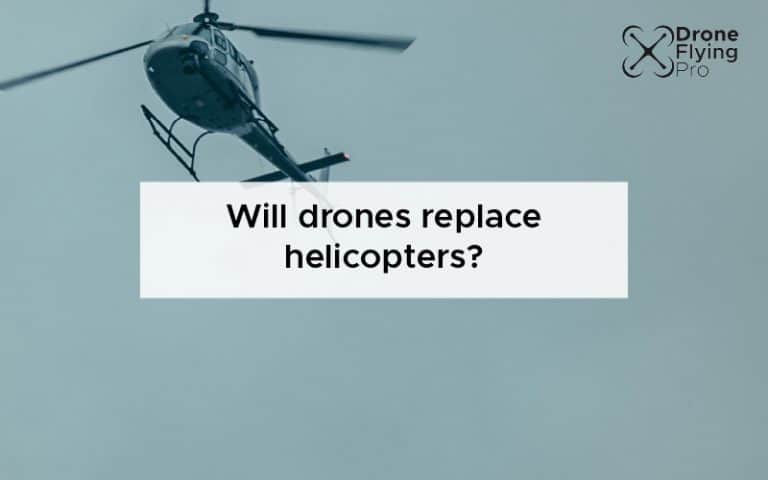When a new technology comes into the public’s awareness, news articles and scientific outlets often talk about how new technology will overtake and overthrow an old one. Drones were no different. In the early 2000s, drone technology became cheaper, more affordable, and many people started researching drone technology as a replacement for helicopters.
Drones can potentially replace helicopters in situations such as search and rescue, monitoring wildlife, inspecting infrastructure, and some photography applications such as real estate photography. If you want to travel long distances and lift heavy objects, helicopters are your only option.
Before drones, helicopters were the primary way to capture low-altitude aerial footage and photography. They also provided transport for various services and acted as a rapid way of transporting goods.
In this article, we will look at the potential of drones to replace helicopters in a variety of tasks and situations.
All of the ways that drones may replace helicopters
As drone technology gets cheaper for companies, various tasks that used to be only suitable for helicopters became easier to do because of drones. Sometimes the new application was simply hyperbole, and the reality did not live up to the media storm surrounding the potential for drone technology. However, in other ways, drone technology was far superior to helicopters. For example, search and rescue, monitoring wildlife and getting up close and personal with critical infrastructure for energy networks and other industries.
Search and rescue
The US military uses unmanned aerial vehicles to complete a majority of its search and destroy missions. These unmanned aerial vehicles (fixed-wing drones) could also scan large wilderness areas in search of people in places such as large national parks.
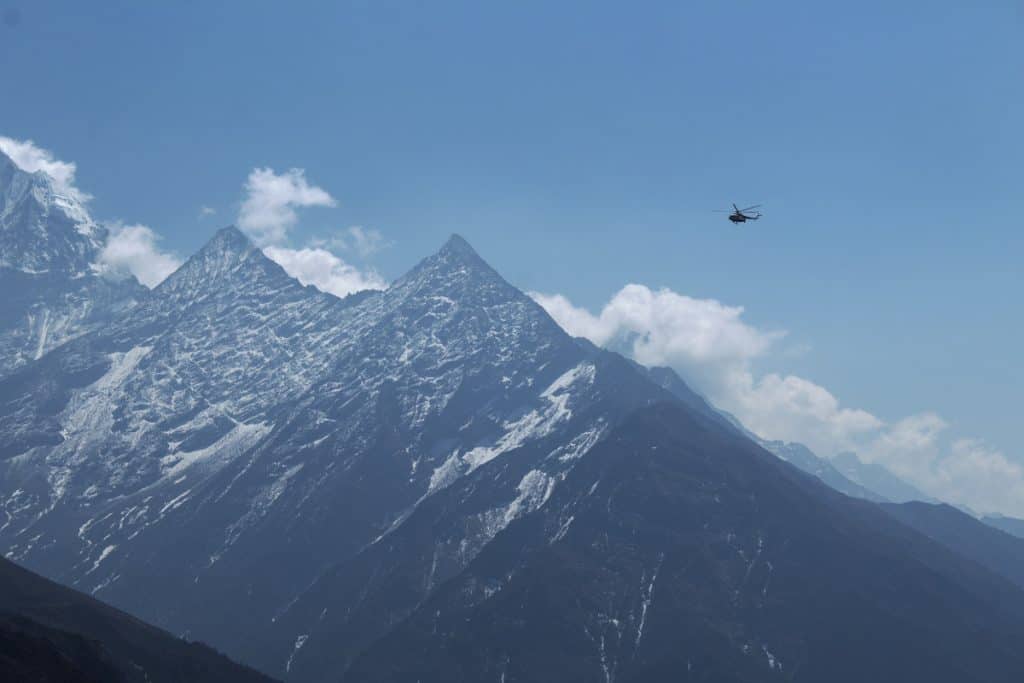
In one example, published by new scientist, scientists at Brigham Young University took a commercially available propeller-driven plane with a 1.2 m fixed wingspan optimised for a low-speed flight. They adapted it to fly and search autonomously.
Their mission was to provide search and rescue teams with a cheap alternative to helicopters and could be used in high altitudes and more adverse weather conditions. The great thing about using a drone for search and rescue missions is that the search and rescue teams can search large areas without piloting experience. They click on the screen of a computerised map, and the aircraft will work autonomously to search these areas.
In trials, operators have been using the craft for between 35 and 150 minutes. They were able to find a dummy that had been dumped in the wilderness.
In another example utilising a quadcopter drone – published in the scientific literature – a consumer drone was able to locate a mountaineer. He and his climbing partner were separated whilst climbing the world’s 12th highest peak – Broad Peak in the Karakoram Mountains of northeastern Pakistan.
In this rescue, a DJI Mavic Pro drone was used to fly up to 8400 m which is well above the maximum service ceiling of 5000 meters listed in the drone specification.
Not only did the drone go up to an incredible height, but the wind was also approximately 40 km/h, and the ambient air temperature was -10 degrees Celsius.
Once the victim was found, the drone could hover in until the victim acknowledged the drone’s presence with a wave. The victim had enjoyed 36 hours at 7600 m near the death zone due to its high mortality rates caused by the thin air.
This example is an excellent demonstration of how high a drone can fly to carry out a flight mission.
Another study looked at using drones in open pit mining operation disasters. They studied and examined the operational flight time, working load, and distance that drones can fly to speed up the rescue operation.
There is certainly plenty of evidence to suggest that using a drone in place of a helicopter for search and rescue can help the crews locate the people faster and with some of the duties and lifting required for the safe extraction of people.
Monitoring wildlife
Drones are also superior to helicopters when monitoring wildlife. The superior is because they are very portable, they have the ability to zoom in on specific areas of the environment, they have low noise compared to a helicopter.
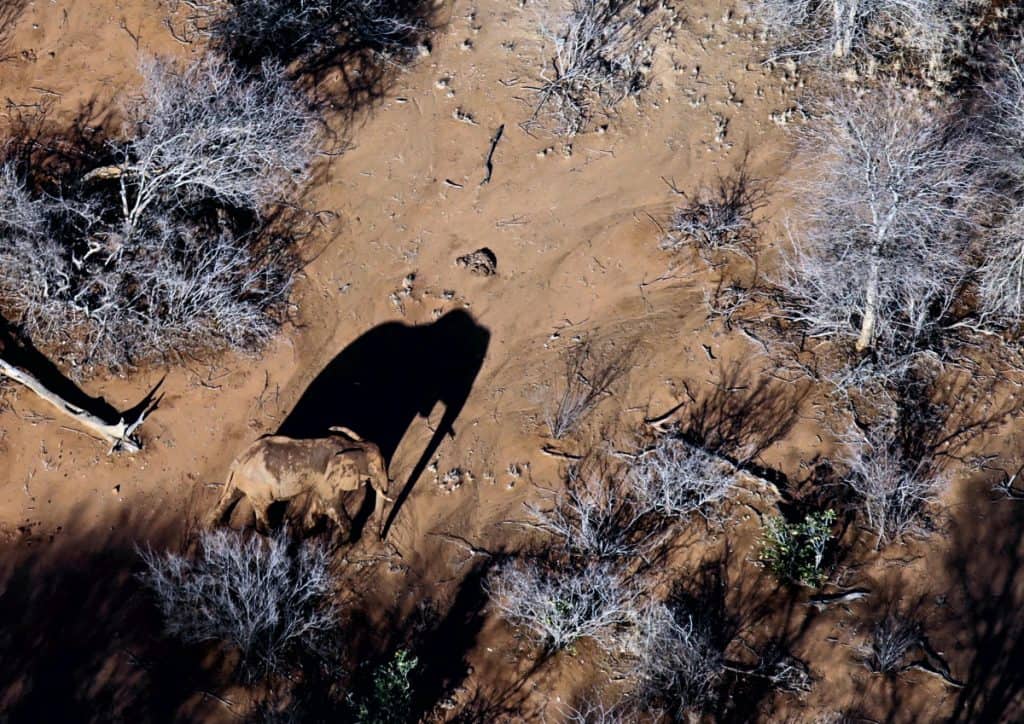
If you want to know more about the best drone for filming wildlife check out my other article where I go through the best current drones for monitoring wildlife without bothering them – click here.
In a study published by Australian researchers, they looked at unmanned aerial vehicles and manned helicopters to monitor macropod populations. Helicopter surveys were a proven and reliable, repeatable method for broadscale monitoring of kangaroo populations. But the availability of long-range drones and their low cost offered up an opportunity that they wanted to test.
They used a long-range fixed-wing drone to survey kangaroos and other wildlife populations at a landscape scale and validate the results against those from the current best practice helicopter surveys.
They sent out to observers in the rear seats of a helicopter and compared it to using drone technology.
They found that the encounter rate for wildlife was significantly lower in drone technology than compared with the helicopter survey. This experiment resulted in a low estimate of macropod density versus the helicopter approach.
They noted that significant improvements were required in the camera technology to survey kangaroos and the drone.
A more recent study looked at drones and helicopters for the broadscale animal surveys conducted regularly. Once again, it was done in Australia. They had a similar result and found that the drone could only survey half of the area required, and it was unable to distinguish between different species. It recorded less than 13% of the species density observed while using the helicopter survey.
It may take a few more years for drone technology to catch up with the ability of helicopters to travel larger areas and the accuracy and ability for the human eye to pick out more animals than a camera and artificial intelligence software.
Looking at infrastructure
One of the best things about drones is getting close to infrastructures such as power assets and bridges for detailed photography and 3D modelling for inspections.
Drones can fly directly under bridges and, some drones can point their camera directly upwards to get a detailed shot of everything under the bridge.
Wind farms are another area where drones could replace helicopter technology and other inspection methods such as abseiling and climbing.
Windfarms
Inspecting wind turbines typically requires an engineer to scale the huge fixture from the inside and look for potential damage or future operation issues. There are loads of companies that offer drone inspection of wind turbines and others are also use thermal imaging to detect hot motors and friction points.
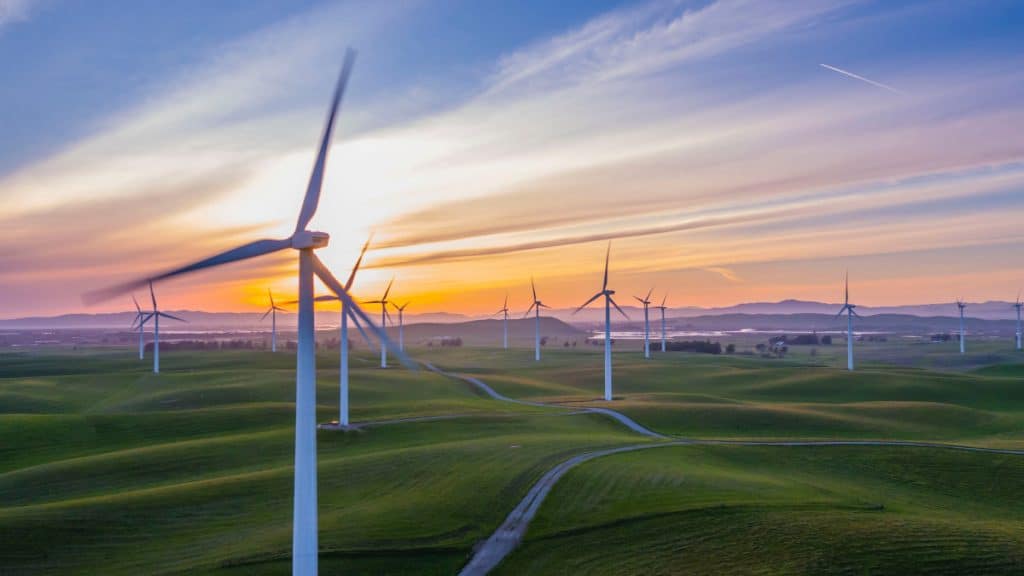
The main reason is to investigate the integrity of the blades, which is very hard to do conventionally. The blades of a winter mowing range from 5200 m long, and accessing them is incredibly hard. In the past, people have tried to look at them using binoculars and a telescopic lens, but it is accurate and is hard to document exactly what the problem is if you identify one.
A company called SkySpecs is an example of a company that optimises operations and maintenance for wind farms. They have developed custom-designed drones and predictive maintenance software and algorithms to answer this specific question.
Researchers in the United Kingdom have taken this one step further and developed autonomous drones to inspect offshore energy sites. In the research led by the Edinburgh Centre for robotics, they aimed to remove the need for humans to carry dangerous and costly tasks such as abseiling turbines and going to offshore wind farms in ships or helicopters.
Spraying in agriculture
Spraying crops is a very common use of drone technology. Drones can fly directly above the crops – minimising the amount of overspray into neighbouring fields and operating autonomously – manoeuvring up and down rows of crops without continuous pilot attention.
The two most popular crop-spraying drones on the market are manufactured by DJI and can cover approximately 30 ac/h.
The acreage that these drones can cover are:
- Agras T20 = 29.7 acres
- Agras T16 = 24.7 acres
The amount of acreage that your drone will cover depends on various factors, including the weather, the amount of liquid and the density of the liquid that it is carrying, and if the drone has to manoeuvre around complicated geography or avoid obstacles such as tree lines.
To maximise the spraying efficiency, you have two take a fair amount of time to plan your mission so that the drone is flying the minimum amount of distance through your fields.
Spraying using a helicopter or other aerial vehicle can be dangerous and costly. The automation for spraying crops using a drone will likely allow farmers to focus on other tasks.
Specific niche photography
Helicopters can also be used to capture aerial footage and photography. Drones will likely replace all aerial photography from a helicopter unless the drone has specific use case limitations.
Real estate photography
For example, real estate photography requires that the drone capture various house angles and surrounding areas. This outcome would be incredibly expensive and impossible with a helicopter due to the downdraught moving trees and causing a lot of movement in the surrounding areas.
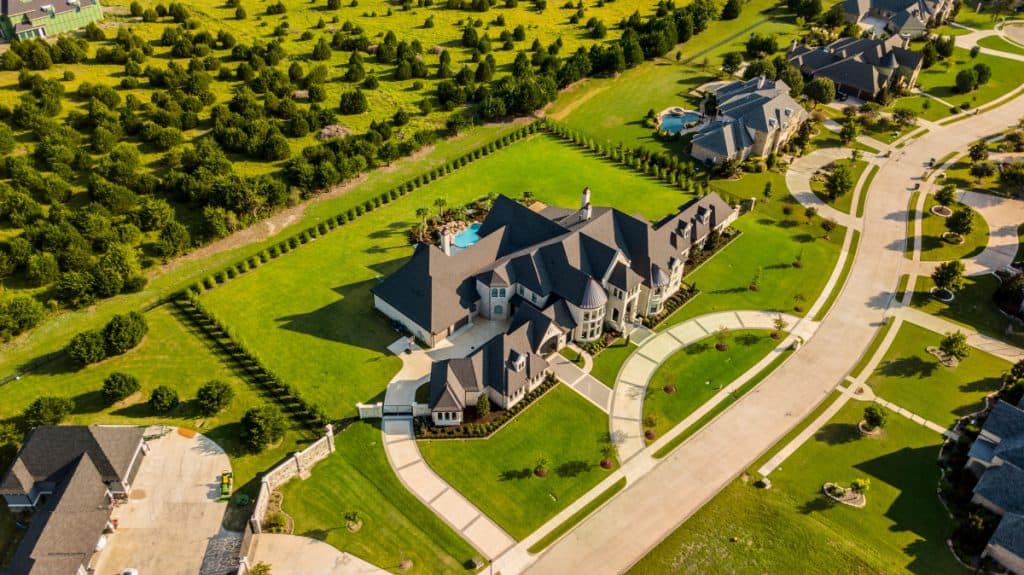
Drone technology is becoming cheaper, and the cameras that the drones are carrying are much more high resolution and capable than ever before.
Other niche photography includes using lidar from drones to map archaeology.
Archaeology
A study published in 2018 looked at the use of lidar from drones to increase the quality of the documentation of archaeological features and the physical properties.
It was found that a modest improvement was found in the drones, but it was not as convincing as one would perhaps expect, given the large increase in terms of the area and ground points the drone can collect. Dense vegetation obstructs laser beams from reaching the bare earth, reducing the accuracy in documenting archaeological features.
The main advantages of using a drone are its flexibility, low-flow altitude, small laser footprint, and a far-reaching field of view, which could mean better than scanning from aeroplanes or helicopters.
Used properly, however, lidar from drones can make a substantial improvement to archaeological remote sensing.
Despite all of the advantages of drones, drones will not be able to do in the near future. Let’s take a quick look at them now.
Things only helicopters can do
There are a few things that only helicopters are suitable for doing. Drone technology cannot carry large weights or travel for large distances.
Carry people
Helicopters are much better suited for carrying people.
Several start-ups and companies are trying their best to make drone commuting a reality.
The Ehang 184 personal drone is about the size of a smart car and claims to deliver one human (up to 260 pounds) anywhere within a 10 mile/23-minute flight time reach. That’s pretty impressive. This is more drone-like because it is completely autonomous, with passengers only giving the drone very simple guidance – the flying it does itself!
until drone technology gets safer, more affordable, and can travel much larger distances, helicopters will always be the dominant vertical takeoff mode of transport for carrying people.
Travel long distances
Helicopters are much better at travelling large distances due to their primary power source if you want to travel large distances with your aerial vehicle.
The capacity of a drone battery is severely limited due to the technology, and the energy density is much lower than that of petrol.
Drones can only travel approximately 10 km away from their remote control but will likely run out of battery power to return home safely. These issues make the average long-distance trip anywhere between one and 2 km away from the pilot.
If you want to travel long distances, there is no doubt that helicopters are much more capable than drones.
Lift heavy objects
The most popular on the market is the DJI Spreading wings and DJI Agras MG-1 that can carry up to 11 kgs each. But the maximum that a commercial drone can carry at the moment is 18kg. That feat is performed by the is the Freefly Systems ALTA 8.
Things will improve rapidly, and scientists and engineers are always pushing the limits of what is possible. Top Flight Technologies have developed a gas/electric hybrid that can carry and fly for more than two and a half hours! Other than that, the start-up is quietly developing a 100-kilowatt hybrid drone that can lift 100 kilograms — enough to carry a human or two — for up to three hours.
It can be hard to know what a drone can lift in the wild vs what the manufacturer says. Here is a comparison of some of the most popular commercial drones and drones manufactured to lift heavy things! You’ll be surprised at exactly how much some of the smaller drones can lift!
| Drone | Maximum Payload | Source of information |
| DJI Matrice 600 Pro | 6 kg | Official Website |
| Freefly Systems ALTA 8 | 12 kg | Official Website |
| DJI Agras MG-1 | 10 kg | Official Website |
| PD6B-AW-ARM | 20 kg | Official Website |
| DJI Mavic Mini | 181 g | YouTube experiment |
| DJI Mavic Air | 331 g | YouTube experiment |
| DJI Mavic 2 Pro | 531 g | YouTube experiment |
| DJI Phantom 3 | 1.1 kg | YouTube Experiment |
| DJI Phantom 4 | 1.1 kg | YouTube Experiment |
| DJI Spark | 65 g | YouTube Experiment |
| VALKYRIE HEAVY PRO | 30 kg | Official YouTube video |
If you want to lift heavy loads is much more suitable to use a helicopter than a drone. They have much more power, and some drones can lift to 44,000 lbs.
Summary
In this article, we have gone over everything you need to know about whether or not drones will replace helicopters. Ultimately, it depends on the drone’s task but for large weights, long distances, and carrying people; helicopters will win until drone technology improves significantly.
Drone technology can outperform helicopters for inspecting infrastructure, niche photography applications, some agricultural and wildlife monitoring tasks, and helping search and rescue teams find victims.
As drone technology continues to improve, drones will likely overtake helicopters in many different areas. The race is on for drone deliveries and other fast aerial tasks such as organ delivery. Many entrepreneurs and start-ups around the world are focusing on a range of different problems.
I am in no doubt the drone technology, whether fixed wing, quad, or vertical takeoff and landing drones, will slowly further develop so that they can beat helicopters at a range of niche tasks and applications.
